This article was co-authored by Kelli Miller, LCSW, MSW. Kelli Miller is a Psychotherapist based in Los Angeles, California. Kelli specializes in individual and couples therapy focusing on relationships, depression, anxiety, sexuality, communication, parenting, and more. Kelli also facilitates groups for those struggling with alcohol and drug addiction as well as anger management groups. She is the author of “Professor Kelli’s Guide to Finding a Husband” and the award-winning and best-selling book “Thriving with ADHD”. Kelli co-hosted an advice show on LA Talk Radio and is a relationship expert for The Examiner. She received her MSW (Masters of Social Work) from the University of Pennsylvania and a BA in Sociology/Health from the University of Florida.
This article has been viewed 34,401 times.
Sexual orientation, more commonly known as sexuality, is how someone is attracted to certain genders (if any), romantically, sexually, or emotionally. However, as a teenager or young adult, sexual orientation can be hard to understand. Are you confused about your sexuality, or what gender(s) you prefer, if any? Here's an article to help you sort out your feelings.
Steps
Understanding Yourself
-
1Acknowledge that you are questioning. The first step to knowing your orientation is to accept and acknowledge the fact you're questioning. Don't judge your feelings, and know that many people question their sexual orientation.
-
2Don't rush yourself. Understanding your orientation takes time and often isn't a simple thing to discover. Take your time and try not to rush yourself to figure out your sexual orientation in order to start dating.Advertisement
-
3Know that sexuality might change over time. You might identify one way and be certain about your orientation, but then you identify another way. For many people, their orientation changes over time before they figure out who they are really attracted to. This is okay!
Understanding Who You Are Attracted To
-
1Learn about different orientations. There are many orientations, such as straight, gay, lesbian, bisexual, pansexual, asexual, and more. Read through descriptions of each sexuality and find the one you relate with the most. Keep in mind that sexuality is on a spectrum, and it can change. Additionally, you don't have to label yourself as anything.
-
2Ask yourself a few questions. This is essential to figuring out your orientation. Ask yourself who you are attracted to, and in what way(s)--this could be sexually, romantically, both, neither, or something else, and being attracted to guys, girls, nonbinary folks, more than one gender, or all genders. Take out a sheet of paper and write down your answers. Ask yourself:
- Which genders could I see myself dating, if any?
- Am I attracted to one specific gender, or multiple genders?
- Am I attracted to people romantically, sexually, or in another way?
- Do I care about my partner's gender; do I have a preference?
-
3Consider past crushes. Crushes you've had in the past might indicate who you're attracted to. This step usually applies to young adults who might've had grade school crushes, or even crushes in college or high school. Think about crushes you have or had--what was the person's gender identity? What type of attraction did you have towards them? Take the answers to these questions into consideration when figuring out your orientation.
-
4Know that orientation is a spectrum, not a switch. Many people think you can only be one of the three: straight, bisexual, or gay. This couldn't be further from the truth. Orientation is not a switch. It's a spectrum slider of different identities and different types of attraction someone can have--in other words, know that orientation isn't black and white.
-
5Look more into an orientation you might identify with. Research an orientation to determine if it is truly your orientation. Orientation is much more complicated than a simple label.
- If you identify as asexual, for example, you might have sex to please your partner, or not want to have sex at all. Visit websites dedicated to it, and read about the experiences of people of that sexuality. This will help you get a feel for whether you relate to it or not. Orientation is determined on what feels right to you.
-
6Talk to an LGBTQ individual. If you're still confused, talk to someone who identifies as queer or otherwise not straight. They might be able to help you sort out how you feel and what your orientation might be. Talk to people of different gender identities and orientations and ask when or how they realized they were LGBTQ.
Exploring With Others
-
1Free yourself of any labels for now. When exploring who you're attracted to with others, you might automatically label yourself based on one or two experiences (i.e, "OK, I really liked this girl I went on a date with. Maybe i'm lesbian."). Don't do this--it will you and you'll feel confused when you give yourself a label and then find out that label doesn't fit with you.
-
2Be transparent with your dating partner(s). Let the person you're going on a date with that you're exploring your orientation. Nobody wants to be considered a "guinea pig" in your sexuality quest. If they are looking for a long term relationship while you're exploring your orientation, they will most likely be hurt when you tell them you aren't interested in a relationship.
-
3Try going on dates with different people. If someone else is exploring their orientation, or you have a friend who wants to explore their orientation as well, ask if they'd be open to going on a date or two and spending some time with you, vise versa. This is a good option for adults or older teens who want to figure themselves out without perusing a serious relationship.
- There are dating sites for people exploring their orientation, such as OkCupid or Grindr.
Expert Q&A
-
QuestionIs it okay to be unsure about your sexuality?
 Kelli Miller, LCSW, MSWKelli Miller is a Psychotherapist based in Los Angeles, California. Kelli specializes in individual and couples therapy focusing on relationships, depression, anxiety, sexuality, communication, parenting, and more. Kelli also facilitates groups for those struggling with alcohol and drug addiction as well as anger management groups. She is the author of “Professor Kelli’s Guide to Finding a Husband” and the award-winning and best-selling book “Thriving with ADHD”. Kelli co-hosted an advice show on LA Talk Radio and is a relationship expert for The Examiner. She received her MSW (Masters of Social Work) from the University of Pennsylvania and a BA in Sociology/Health from the University of Florida.
Kelli Miller, LCSW, MSWKelli Miller is a Psychotherapist based in Los Angeles, California. Kelli specializes in individual and couples therapy focusing on relationships, depression, anxiety, sexuality, communication, parenting, and more. Kelli also facilitates groups for those struggling with alcohol and drug addiction as well as anger management groups. She is the author of “Professor Kelli’s Guide to Finding a Husband” and the award-winning and best-selling book “Thriving with ADHD”. Kelli co-hosted an advice show on LA Talk Radio and is a relationship expert for The Examiner. She received her MSW (Masters of Social Work) from the University of Pennsylvania and a BA in Sociology/Health from the University of Florida.
Psychotherapist Absolutely—it's definitely okay to be confused about your sexuality. In general, sexuality is very fluid and not always black and white. It's okay to not have a direct answer for what your sexuality is, and it's also okay to explore! See if you're ready to take that next step and see how you feel within that situation. If the experience doesn't feel right to you, you'll at least have a little more clarity.
Absolutely—it's definitely okay to be confused about your sexuality. In general, sexuality is very fluid and not always black and white. It's okay to not have a direct answer for what your sexuality is, and it's also okay to explore! See if you're ready to take that next step and see how you feel within that situation. If the experience doesn't feel right to you, you'll at least have a little more clarity. -
QuestionI know I’m not straight but I don’t know what I am. I like guys and girls.
 NicoTop AnswererIf you are attracted to girls and guys, you're most likely bisexual. Being bisexual means somebody is attracted to only two genders.
NicoTop AnswererIf you are attracted to girls and guys, you're most likely bisexual. Being bisexual means somebody is attracted to only two genders. -
QuestionIs it okay to not want a label? It's really confusing and hard to deal with sometimes.
 SirenCommunity AnswerOf course. There are some people in the LGBTQ community who don't label themselves and that is completely okay. As long as you're happy with who you are, don't feel that a label is needed.
SirenCommunity AnswerOf course. There are some people in the LGBTQ community who don't label themselves and that is completely okay. As long as you're happy with who you are, don't feel that a label is needed.
Expert Interview

Thanks for reading our article! If you'd like to learn more about discovering your sexuality, check out our in-depth interview with Kelli Miller, LCSW, MSW.

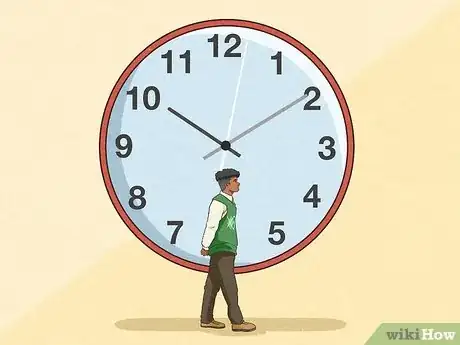
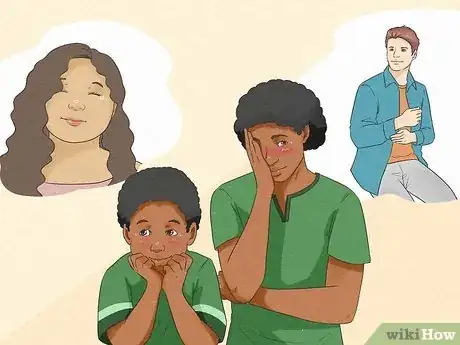

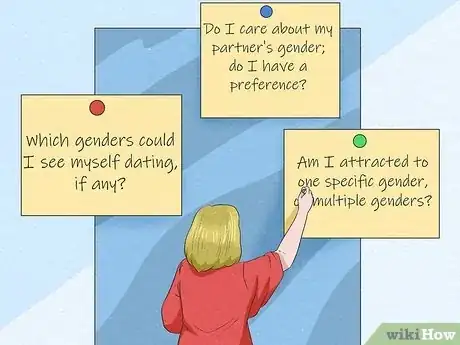

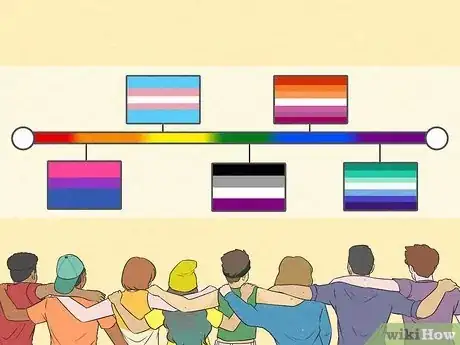
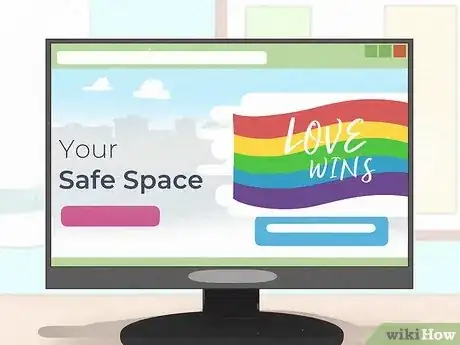
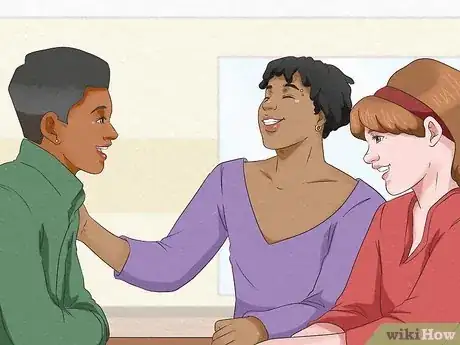







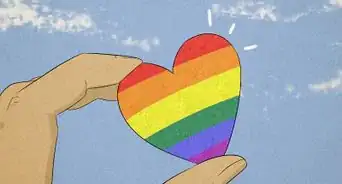



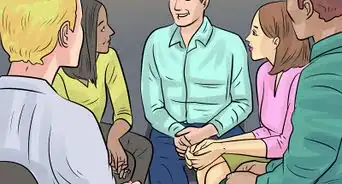




















































Medical Disclaimer
The content of this article is not intended to be a substitute for professional medical advice, examination, diagnosis, or treatment. You should always contact your doctor or other qualified healthcare professional before starting, changing, or stopping any kind of health treatment.
Read More...